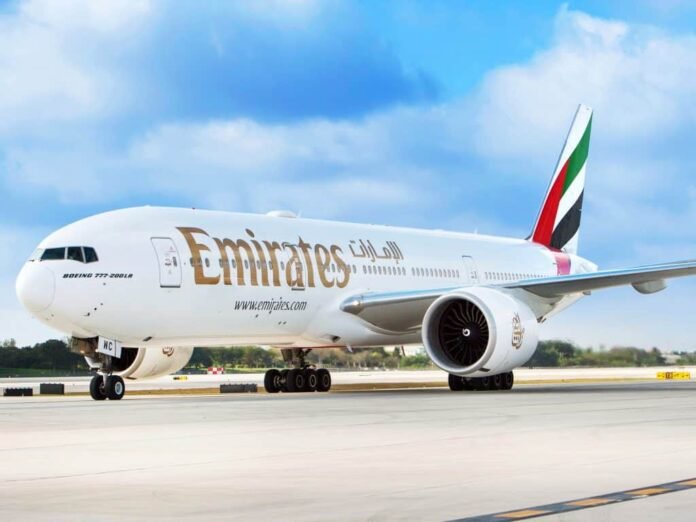Understanding Emirates’ Power Bank Restrictions: Here is what’s in store for travelers this October
You have just gotten comfortable in your seat on an Emirates flight, and you are likely peeking through your phone for last-minute gate information or a short playlist to veg out to. Your phone is at 20%, and as is habitual, you pull your power bank out for a charge. Not so fast. From October 1st, 2025, that simple act might get you in trouble with the crew. Emirates is clamping down on power banks, and it’s no small detail; it is a plan to entirely rethink how power banks will be managed on their flights. If you have an upcoming trip to or from Dubai or travel frequently, you should pay attention to this.
This post dives into the details of the new rules, why Emirates made the call, and practical ways to adapt. Whether you are packing for business or a beach getaway, we will cover what you need to know to avoid surprises at security and keep your trip smooth.
Why These Restrictions? Putting Safety at the Top
Airlines usually don’t react to this type of announcement. Emirates is issuing this for no other reason than safety issues involving lithium-ion batteries from power banks. Lithium batteries store a lot of energy in a small space – great for your phone, possibly not as great if the batteries have a malfunction. This could range from overheating, short circuiting, or other physical damage, and then this could lead to a fire – all fine if it happens in your home or car, but maybe not so fine on an airplane.
Innocently timed occurrences such as the recent Emirates 777 incident and others have created this issue. As various aviation safety authorities like the FAA and EASA reported, several lithium batteries have caused some issues with fires or smoke on planes. In the end, they probably did a risk assessment and made the decision to err on the side of caution. Emirates clearly did not issue this as a scare tactic, rather they want to be quite proactive. They are not the only airline to make policy changes or notifications; they just happen to be the latest. If you’re traveling to/from a Emirates hub, you are probably best to (temporarily) leave the power in your power bank at home. After all, isn’t it easier to develop different travel habits than to have to deal with a fire or emergency on an aircraft? In this situation, “better safe than sorry” might serve a purpose.
The core worry? Power banks can get jostled in overhead bins or overheat if left charging unattended. By limiting use and storage spots, Emirates aims to keep risks low. It’s a reminder that while these devices make travel easier, they are not worth the hazard at 35,000 feet.
Emirates’ New Power Bank Regulations: The Breakdown
Effective October 1, 2025, Emirates has clear guidelines on power banks. No more guessing. Here’s what the rules say, pulled straight from their policy.
First off, you can still bring one power bank per passenger. That’s the good news. But it has to meet strict specs: a maximum capacity of 100 watt-hours (Wh). Anything bigger? Leave it at home or ship it separately. And the rating needs to be printed right on the device, clearly visible, no faded stickers or guesswork.
Carriage is cabin-only. Power banks go in your carry-on bag, period. Checked luggage is off-limits because if a fire starts down in the hold, it’s harder to spot and handle. Once you are on board, storage gets even pickier. Forget tossing it in the overhead locker. Emirates requires you to keep it under the seat in front of you or in the seat pocket. It’s a small change, but it means your power bank stays close, so any issues pop up right away.
The big no-no? Using or charging it during the flight. That includes plugging in your phone or laptop to it. No mid-air top-ups allowed. This rule applies across all Emirates flights, no exceptions for class of service. Crews will enforce it, so expect polite reminders if they see you reaching for that cable.
These regs build on global standards from the International Air Transport Association (IATA), but Emirates has dialed up the details for its operations. It’s all about layering protections without overcomplicating travel.
Spotting a Compliant Power Bank: Capacity 101
Not everyone knows what “100Wh” really means. If you’re like me, you grab a power bank because it promises “all-day charge” without checking the fine print. Time to decode it.
Watt-hours measure total energy storage. To figure yours out, multiply the voltage (usually 3.7V for lithium batteries) by the milliamp-hours (mAh), then divide by 1,000. For example, a 10,000mAh power bank at 3.7V works out to about 37Wh, well under the limit. A beefier 27,000mAh one? That’s pushing 100Wh, so measure twice.
Apps like those from battery makers or even a quick online calculator can help if the label’s unclear. Pro tip: Snap a photo of the specs before you pack. Security might ask, and having proof speeds things up.
What about other devices? Spare batteries for cameras or vapes follow similar rules, cabin carry-on, under 100Wh. But power banks are the focus here, as they’re the most common culprits.
Onboard Habits to Ditch (and Better Ones to Pick Up)
Old habits are hard to change, especially when your tablet’s screen turns dark right as the in-flight movie starts. well, you need to rethink, because you are not allowed to bring a power bank.
The first thing to do is to charge everything before you get to the airport, fully charged. Use fast chargers at home or use the fast charger in most airline lounges. Even Emirates’ premium lounges have plenty of USB ports available. Just bring an airline-friendly slim (less bulky) cable rather than your regular charging cable.
When you’re in the air, the Emirates plane should have outlets on most seats. Also, most Emirates planes have a USB port on most seats, and sometimes an AC plug in business first class or economy. You can check which routes have AC plugs and USB by checking the airport or airline if you’re flying a long-haul route like Dubai to New York. Just remember to bring along a universal adapter since the outlet plugs don’t always use the same style across the globe.
If you are on a short flight, consider using the old-school strategy of just keeping the screen brightness low, switching airplane mode on early, and not having many tabs open when using the app. It buys you hours. And don’t forget, Dubai International has charging stations everywhere; grab a boost during layovers.
If you are a heavy user, consider built-in battery cases for your phone. They are less bulky than separate power banks and often skirt the rules since they’re part of the device.
How Emirates Stacks Up Against Other Airlines
Is Emirates being extra strict, or is this the new normal? A quick look around shows it’s par for the course, with some twists.
Qatar Airways and Etihad, fellow Gulf carriers, ban power bank charging onboard, too, but allow them in overhead. American Airlines limits to 100Wh and cabin-only, mirroring Emirates on carry but looser on storage. British Airways goes further, no power banks over 160Wh, but use is okay if monitored.
Globally, IATA recommends no spares in checked bags, and many follow suit. Singapore Airlines, for instance, outright bans damaged batteries. Emirates’ seat-pocket rule feels unique, though; it’s their way of keeping things visible.
If you are multi-airline hopping, double-check each carrier’s site. Tools like the FAA’s pack-safe app are gold for cross-checking.
Staying Prepared: A Traveler’s Checklist
To wrap up the how-to, here’s a quick checklist before your next Emirates booking:
- Inspect your power bank: Under 100Wh? Label clear? One per person.
- Pack smart: Carry-on only, plan for under-seat storage.
- Charge ahead: Full batteries, lounge time, in-flight ports.
- Know the backups: Dim screens, battery cases, adapters.
- Stay updated: Rules can evolve, peek at Emirates’ dangerous goods page.
Following this keeps you compliant and stress-free. And if you are caught short? Airport shops sell compliant options, though they’re pricier.
Wrapping Up
Emirates’ October power bank restrictions might cramp your style a bit, but they are rooted in keeping everyone safer up there. We have covered the why, fire risks from lithium batteries, the exact rules on capacity and storage, and swaps like pre-flight charging to fill the gap. Compared to peers, Emirates is thorough but not outlandish.
At the end of the day, a little prep goes far. Your next flight doesn’t have to mean a dead phone or awkward chats with crew. Pack right, charge up, and enjoy the ride. Dubai’s lights or that business meeting awaits. Safe travels, and drop a comment if you’ve got your own power bank hacks.








